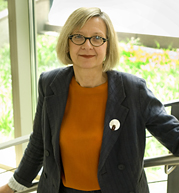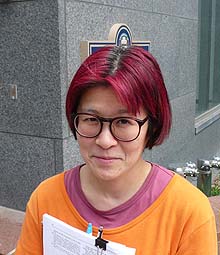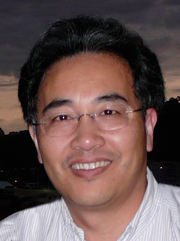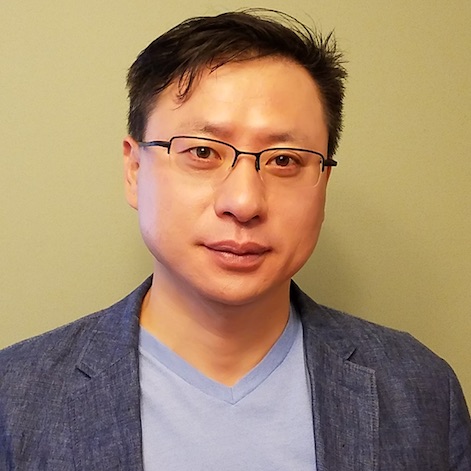
Jinwoo Ahn
This email address is being protected from spambots. You need JavaScript enabled to view it.
Phone (412) 383-6933
Fax (412) 648-9008
University of Pittsburgh
1055 Biomedical Science Tower 3
Protein-protein and protein-ligand interactions are major events in many critical biological pathways. My research focuses on investigating the molecular and structural basis of these interactions. To that end, I utilize molecular biology and protein biochemistry approaches to obtain functionally active recombinant proteins. With those, we reconstitute and monitor biological events in vitro to directly correlate protein structure-function with biological outcome. We utilize various bioanalytical and biophysical methodology including, but not limited to, CD, fluorescence, SEC-MALS, ITC, SPR, SWAX and HPLC as well as conventional biochemistry. We are currently studying HIV virulence factor-host protein interactions, Cullin-based E3 ubiquitin ligase assembly, regulation of tumor suppressor p53 and its homologs functions by repressors and activators.
Visit Jinwoo's lab website
Education & Training
Undergraduate
Yonsei University, Seoul, Korea
B.S. 1991 in Chemistry
Graduate
The Ohio State University
Ph.D., 1997 in Chemistry
Postgraduate
Columbia University, New York
Postdoctoral Associate 1997 – 2003
Representative Publications
Zhou, X., Delucia, M., Hao, C., Hrecka, K., Monnie, C., Skowronski, J., Ahn, J. HIV-1 Vpr protein directly loads Helicase-like transcription factor (HLTF) onto the CRL4-DCAF1 E3 ubiquitin ligase. J. Biol. Chem. 292, 21117-21127 (2017)
Jang, S., Zhou, X., Ahn, J. Substrate specificity of SAMHD1 triphosphohydrolase activity is controlled by deoxyribonucleoside triphosphates and phosphorylation at Thr592. Biochemistry 55, 5635-5646 (2016)
Zhou, X., DeLucia, M., Ahn, J. SLX4/SLX1 independent downregulation of MUS81/EME1 by HIV-1 Vpr. J. Biol. Chem. 291, 16936-16947 (2016)
Wu, Y, Koharudin, L., Mehrens, J., DeLucia, M., Byeon, C.-H., Byeon, I.J., Calero, G., Ahn, J., and Gronenborn, A. M., Structural basis of clade-specific engagement of SAMHD1 restriction factors by lentiviral Vpx virulence factors.. J. Biol. Chem. 290, 17935-45 (2105)
Active Grants
University of Pittsburgh Center for HIV Protein Interactions (PCHPI), Core director and Project Leader
8/1/17 – 7/31/22
NIH P50GM082251
Structure and function relationships regulating SAMHD1’s dual enzymatic activities, Principal Investigator
7/1/15 – 6/30/20
NIH R01GM116642
The molecular basis of cardiolipin-protein interactions implicated in intrinsic apoptosis, Co-Investigator
9/1/16 – 8/31/20
NIH R01GM113908
Imaging of single HIV-1 uncoating and transport to the nucleus, Co-Investigator
3/24/17 – 2/28/22
NIH R01AI129862
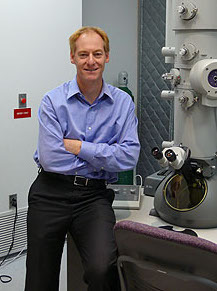
James Conway
This email address is being protected from spambots. You need JavaScript enabled to view it.
Phone (412) 383-9847
Fax (412) 648-8998
University of Pittsburgh
2047 Biomedical Science Tower 3
James Conway
Department of Structural Biology
Visit Conway's lab website
Education & Training
Undergraduate
Massey University, Palmerstrom, North New Zealand
B.S. 1985 in Physics
Graduate
Massey University, Palmerston North New Zealand
Ph.D. 1989 in Biophysics
Postgraduate
National Institues of Health
Bethesda, MD 1990 - 1996
Awards & Honors
1986 Fibrous Proteins Merit Award, Massey University
1997 Special Achievement Award, NIAMS/NIH, In recognition and appreciation of special achievement
1998 Group Merit Award, NIAMS/NIH, In recognition of pioneering contributions to image processing, advancing the resolution attainable in biological electron microscopy
Representative Publications
Lee H, Brendle SA, Bywaters SM, Guan J, Ashley RE, Yoder JD, Makhov AM, Conway JF, Christensen ND & Hafenstein S. A CryoEM study identifies the complete H16.V5 epitope and reveals global conformational changes initiated by binding of the neutralizing antibody fragment. J Virol 89, 1428-1438, 2015
Shingler KL, Cifuente JO, Ashley RE, Makhov AM, Conway JF & Hafenstein S. The enterovirus 71 procapsid binds neutralizing antibodies and rescues virus infection in vitro. J Virol 89, 1900-1908, 2015.
Sattar S, Bennett NJ, Wen WX, Guthrie JM, Blackwell LF, Conway JF & Rakonjac J. Ff-nano, short functionalized nanorods derived from Ff (f1, fd or M13) filamentous bacteriophage. Frontiers in Microbiology (Virology) 6, 316, 2015.
Guan J, Bywaters SM, Brendle SA, Lee H, Ashley RE, Makhov AM, Conway JF, Christensen ND & Hafenstein S. Structural comparison of four different antibodies interacting with human papillomavirus 16 and mechanisms of neutralization. Virology 483, 253-263, 2015.
Tandon R, Mocarski ES and Conway JF. The A, B, Cs of herpesvirus capsids. Viruses 7, 899-914. 2015.
Active Grants
Direct Electron Detecting (DED) Camer
04/01/15 – 03/31/16
National Institutes of Health
S10
Structure and Function of the Herpesvirus Capsid
08/15/11 – 07/31/20
National Institutes of Health
R01
Structural Determinants of Amelogenin Function in Regulating Enamel Formation
09/01/12 – 08/31/17
National Institutes of Health
R01
Inborn Errors of Long Chain Fat Metabolism
07/01/07 – 03/31/16
National Institutes of Health
R01
Roles of Cytomegalovirus Proteins pp150 and pUL96 in Virus Maturation
11/01/14 – 10/31/19
National Institutes of Health
R01
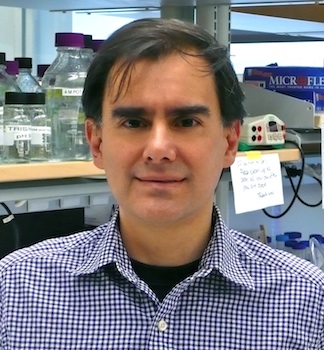
Guillermo Calero
This email address is being protected from spambots. You need JavaScript enabled to view it.
Phone (412) 383-5319
Fax (412) 648-9008
University of Pittsburgh
1040 Biomedical Science Tower 3
Guillermo Calero
Department of Structural Biology
Visit Guillermo's lab website
Education & Training
Graduate
Baylor College of Medicine
Facultad de Medicina, UNAM
M.D. 1991
Cornell University
Ph.D. 2003 in Chemistry and Chemical Biology
Postgraduate
Stanford University
Postdoctoral Scholar 2003-2008
Representative Publications
Murakami K, Calero G, Brown CR, Liu X, Davis RE, Boeger H and Kornberg RD (2013). Formation and fate of a complete, 31-Protein, RNA polymerase II transcription initiaition complex. Journal of Biological Chemistry.
Wehbi VL, Stevenson HP, Feinstein TN, Calero G, Romero, G and Vilardaga JP (2013). Non-canonical GPCR signaling arising from a PTH-arrestin-GS complex. Proc Natl Acad Sci U S A. 110(4):1530-5.
Stevenson HP, Mahkov AM, Calero M, Mathews I, Lin G, Santamaria H, Ross TM, Soltis M, Koshla S, Conway J, Cohen A and Calero G (2014). Electron Microscopy Screening of Protein Nano crystals for Serial Femtosecond Crystallography. Proc Natl Acad Sci U S A. 111(23):8470-5.
Stevenson H.P., DePonte D.P., Makhov A.M., Zeldin O.B., Calero G*, and Cohen A.E* (2014). Transmission electron microscopy as a tool for nano-crystal characterization pre- and post-injector. Philosophical Transations B. Philosophical Transactions B. 17;369:1647 * Corresponding author
Calero G, Cohen A.E, Luft J.R and Snell E (2014). Identifying, studying and making good use of macromolecular crystals. Acta Crystallographica F. 70:993-1008
Active Grants
Structural Studies of RNA Polymerase II Transcription Initiation and Elongation
01/15/15 – 12/31/19
National Institutes of Health
R01
Structural and Functional Mechanisms of PTH-Receptor Signaling
07/01/14 – 05/31/18
National Institutes of Health
R01
Page 2 of 3

